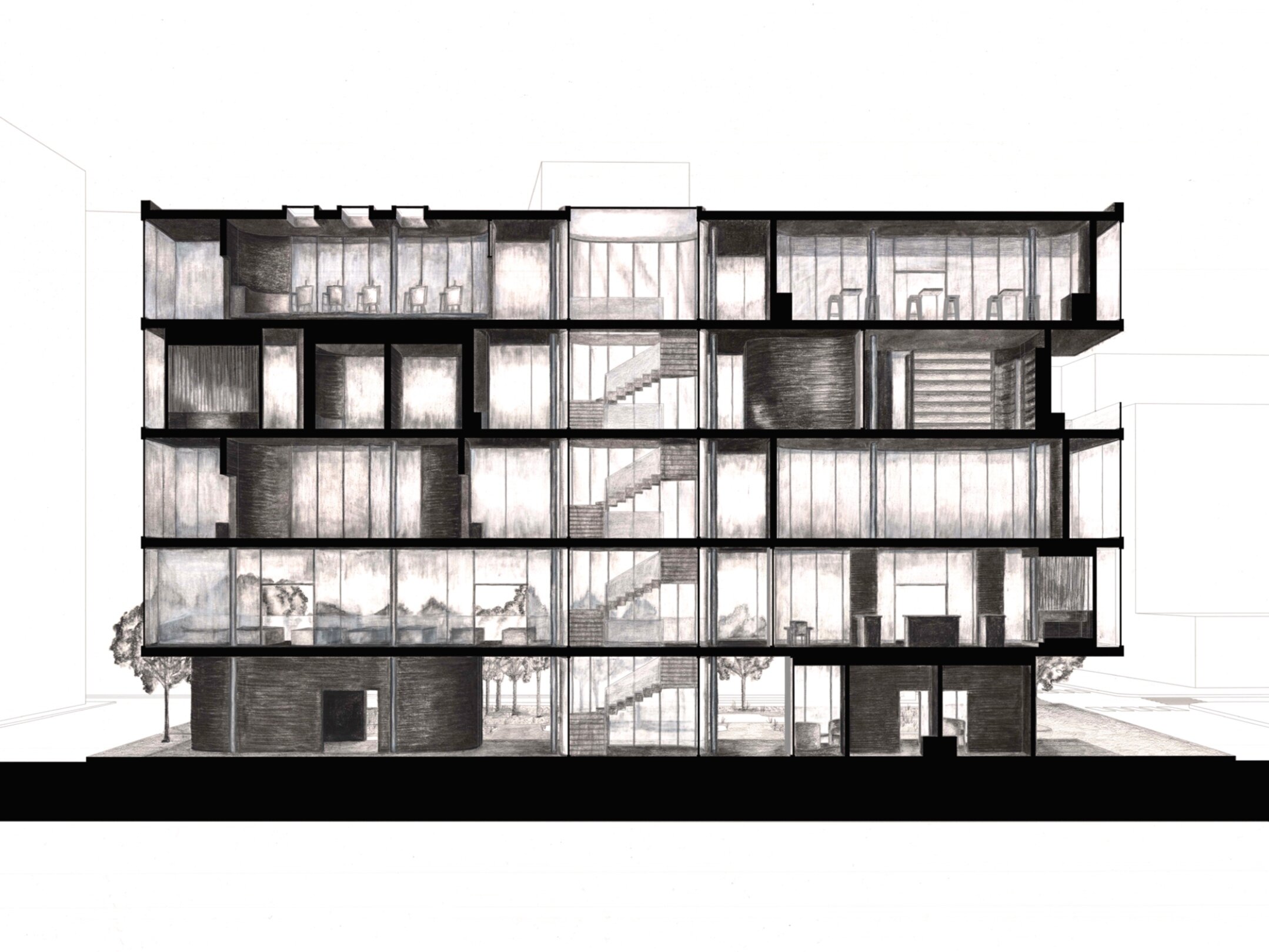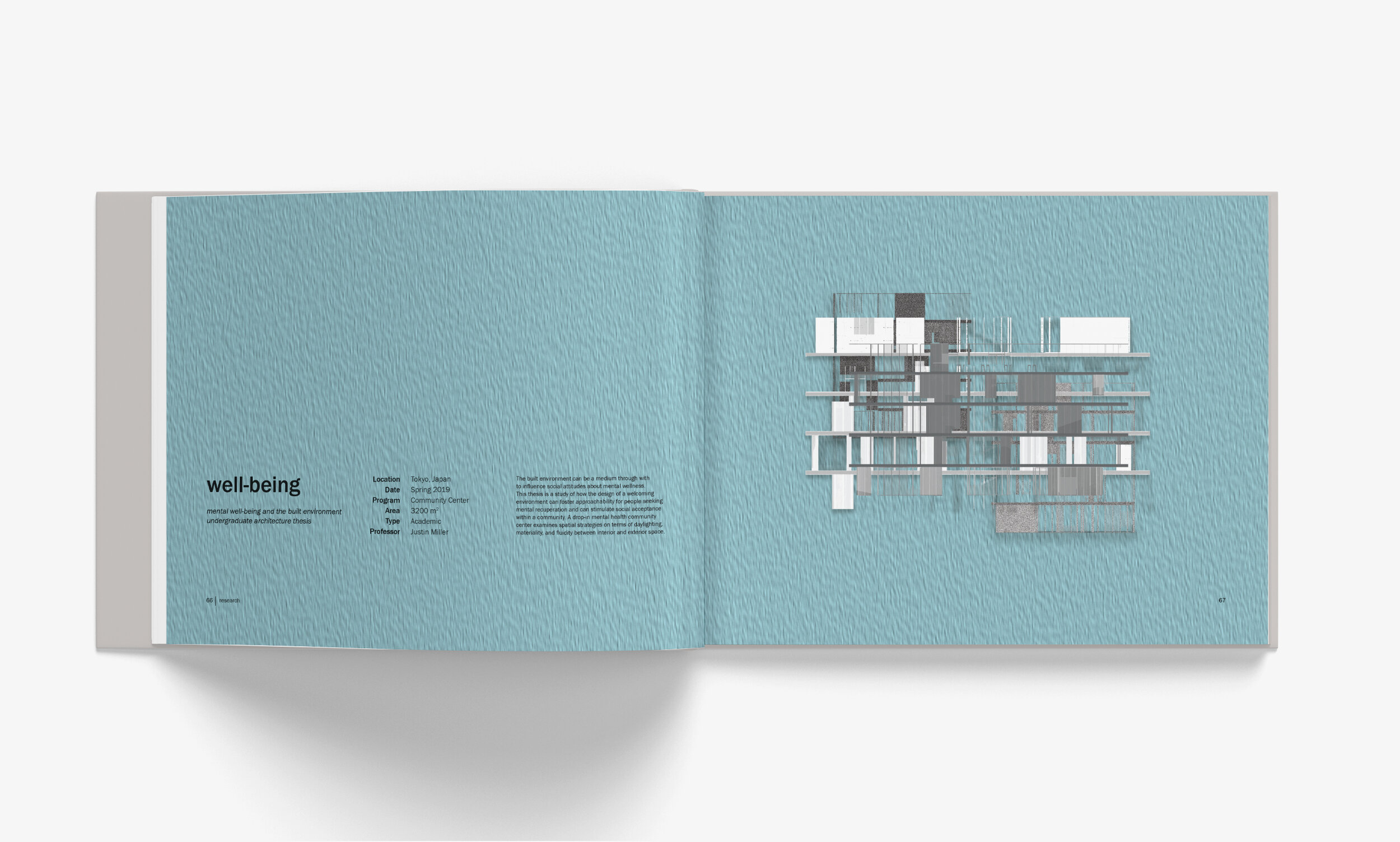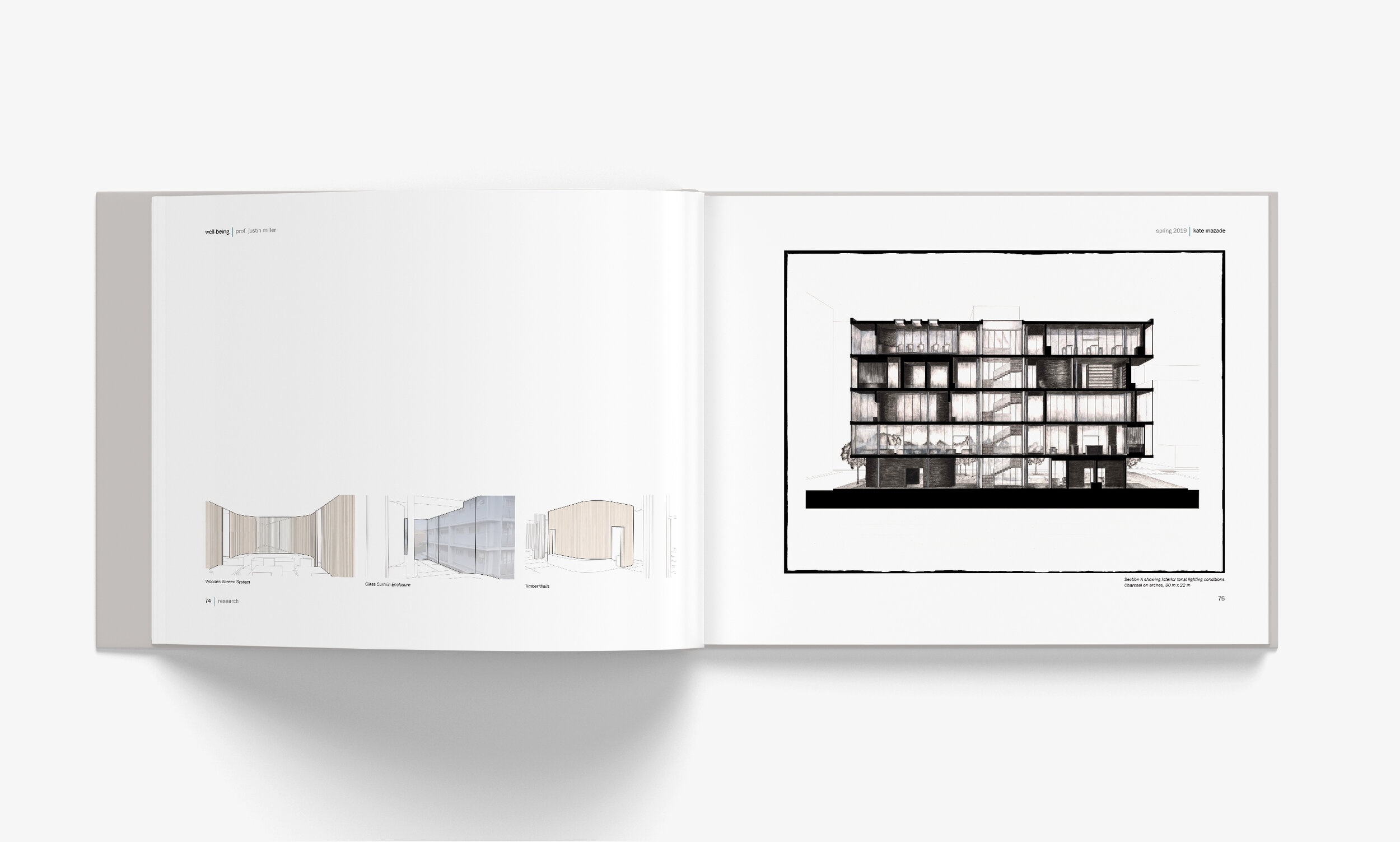well-being
The built environment can be a medium through with to influence social attitudes about mental wellness. This thesis is a study of how the design of a welcoming environment can foster approachability for people seeking mental recuperation and can stimulate social acceptance within a community. A drop-in mental health community center examines spatial strategies in terms of daylighting, materiality, and fluidity between interior and exterior space.
This project was completed as the architectural thesis for Auburn University’s Bachelor of Architecture program.

The mental health community center is a study of how architectural space can have a positive impact on people seeking mental health care and how a project can influence social attitudes toward mental wellness. The building integrates interior and exterior and functions from a variety of spatial scales from large open areas to enclosed programmatic zones to protected niche spaces. The building lifts off the ground on the first floor, creating public spaces that opens the center into the life of the urban area. This allows there to be direct access to the public garden in the southern half of the site.






